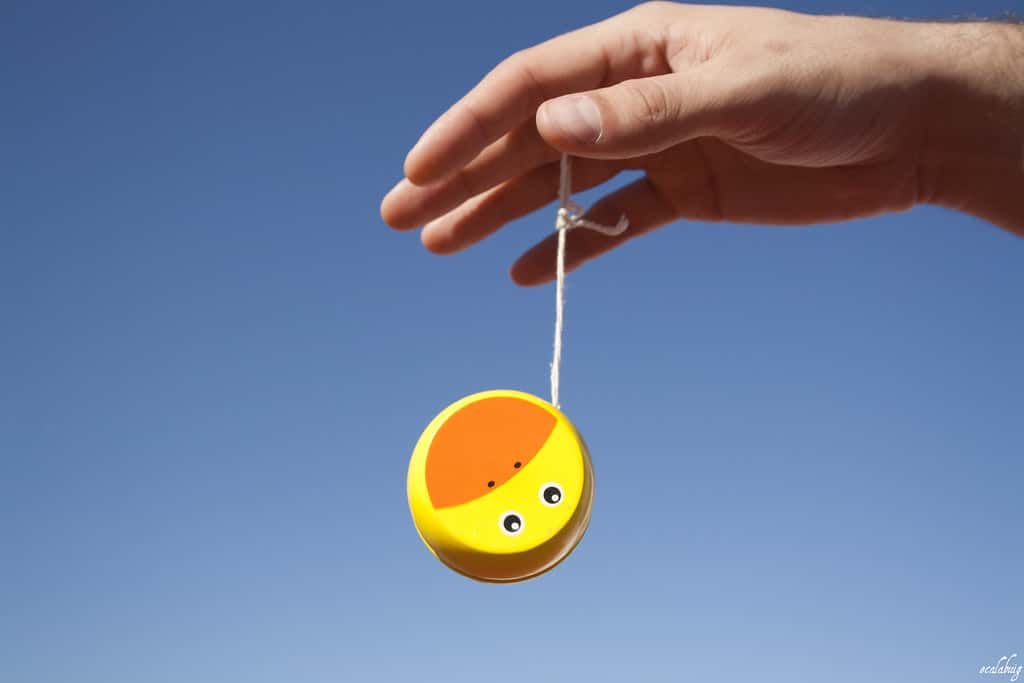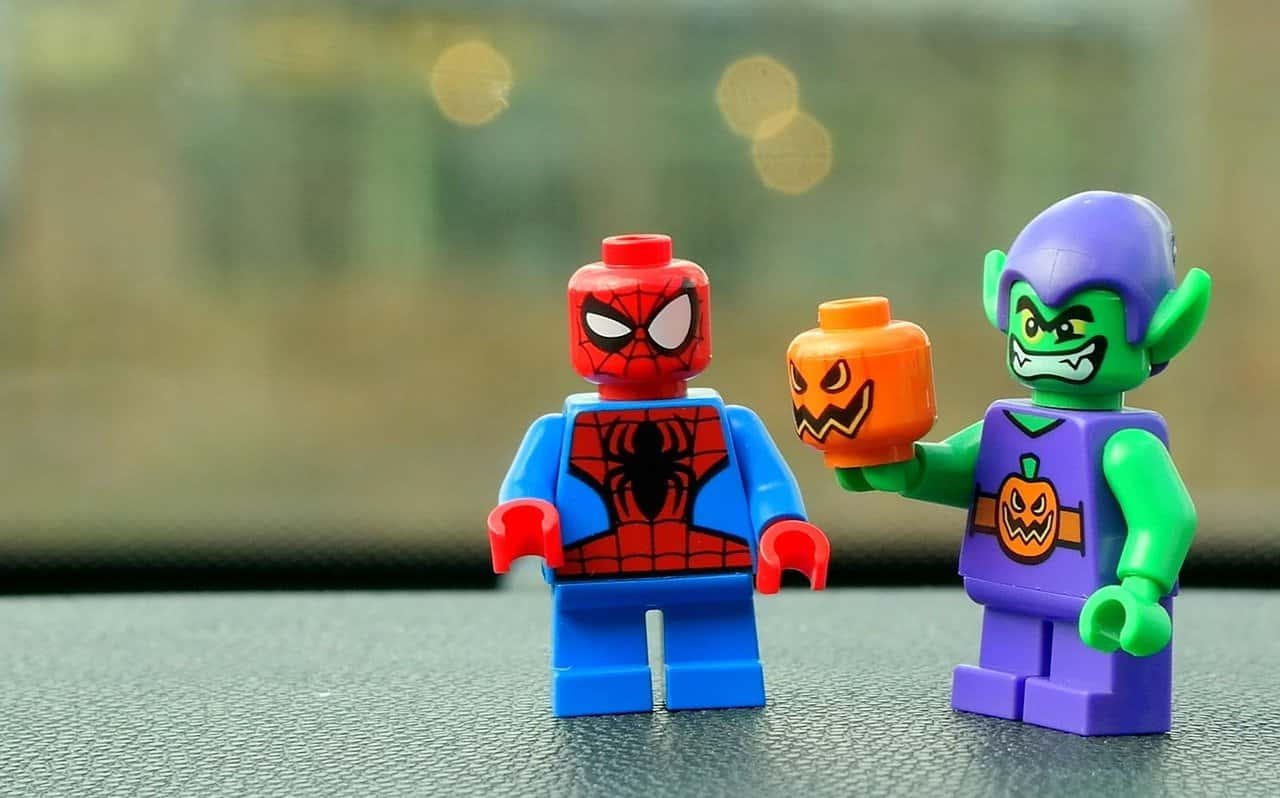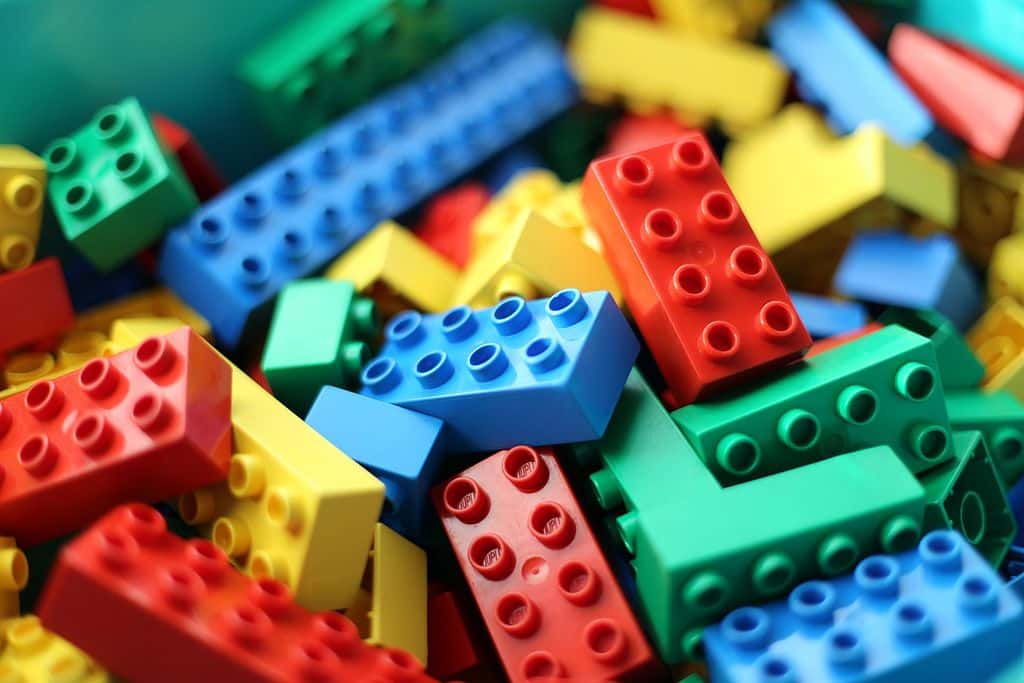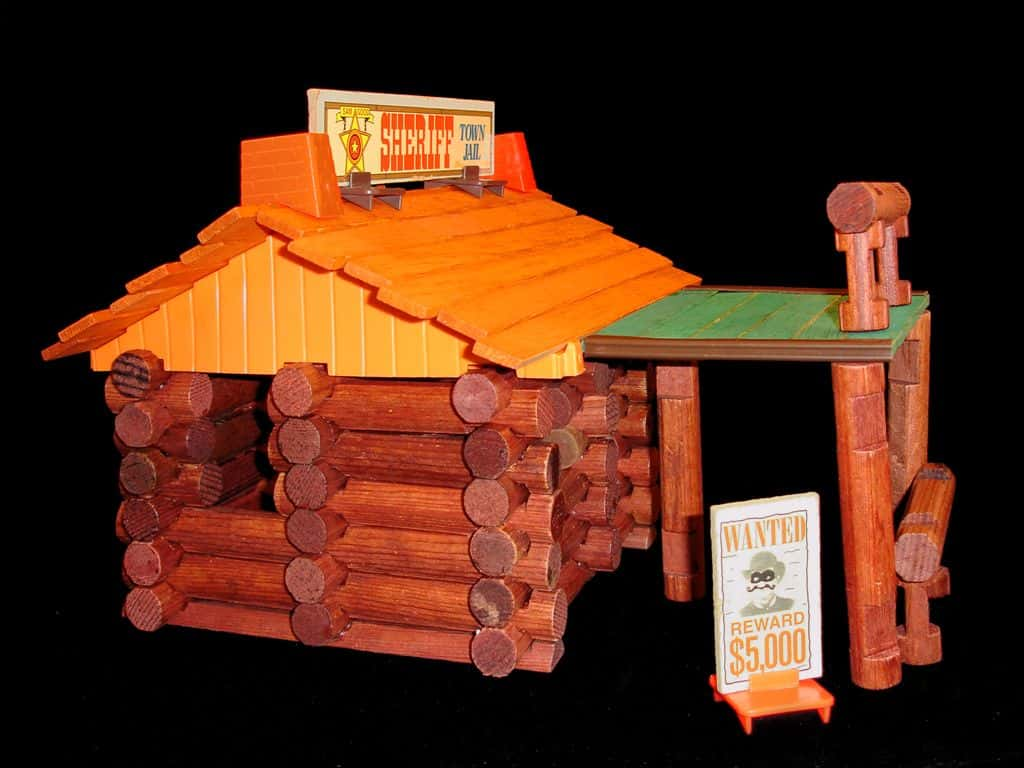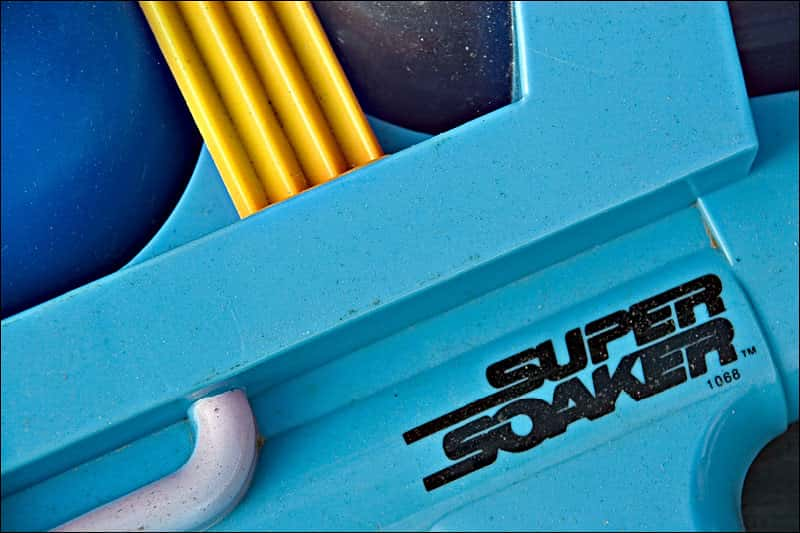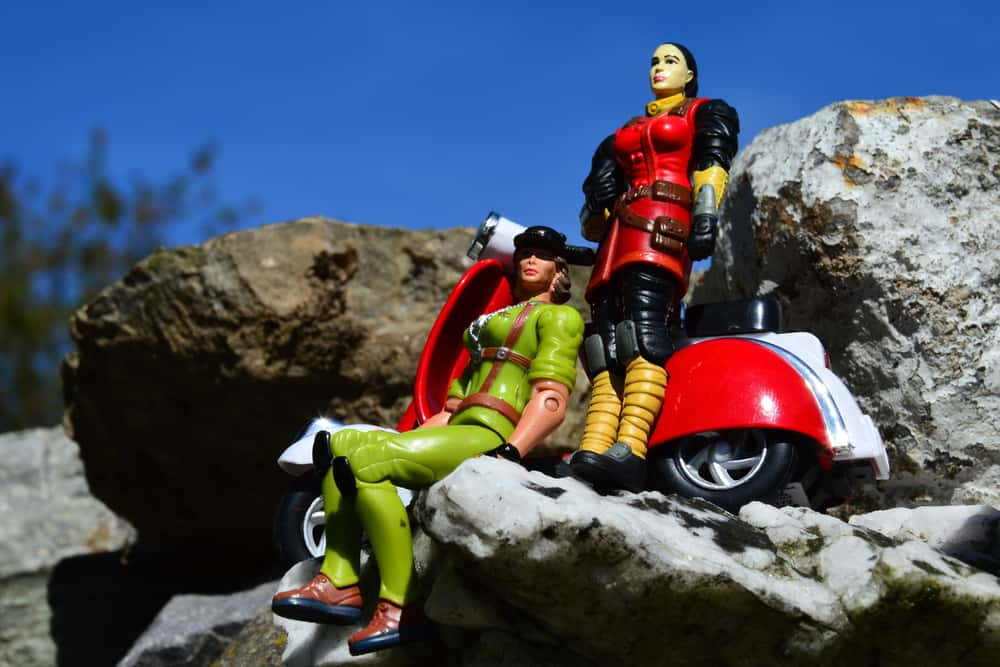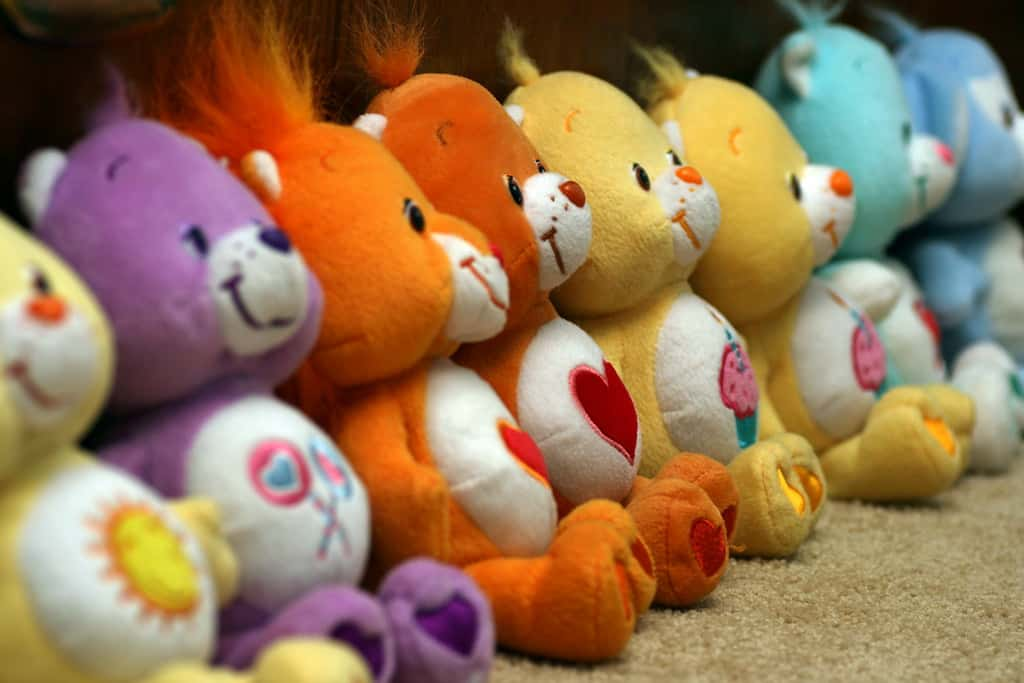"Toys are put on this Earth to be played with by a child".—John Lasseter, director of Toy Story
We all grew up with a favorite toy; maybe it was adorable doll, or an action-packed action figure, or a special stuffed someone to snuggle with. It seems like as long as there have been children, there have been toys. That’s one constant and universal fact of childhood, because even when times are hard, nothing stops a child’s imagination from turning the nearest available object into a plaything. Whether they're providing comfort to a young one or a pang of nostalgia to someone a little older, there's something a little magical about something as simple as a toy. Keep on reading for 42 facts about, you guessed it: toys!
42. The World’s Oldest Toy Box
The earliest toys were dolls. A collection of stone carvings found buried with a child at the Itkol II burial ground in southern Siberia are considered the earliest toys ever found. The carvings depict people and animals, and date to about 2,500 BC.

41. Baby Steps
A ceramic baby rattle has been found near Ankara, Turkey, and archaeologists say it is 4,000 years old. Because dolls are often ambiguous as to their purpose—they might be toys, or they might be religious icons—some argue that this rattle is, in fact, the world’s oldest toy, but we can't say for sure.
40. Yo!
The yo-yo is believed to be the world's second oldest toy, after dolls. Though it's exact origin is unknown, it's believed that it was invented in Ancient China, and used as a weapon in the Philippines for centuries. The name “yo-yo” is believed to be derived from a Tagalog word meaning “to come".
39. In The Loop
The Hula Hoop became one of the first toy crazes in the United States in the 1950s, but they weren’t popular everywhere. British doctors noted an uptick in back and neck problems related to hula hoop use, while in Indonesia they were banned for promoting licentious behavior and lustful feelings. For their part, the Soviet Union used the hula hoop to symbolize “the emptiness of American culture".
38. President Bear
The teddy bear was first made by the Ideal Novelty and Toy Co., and is named for former president Theodore “Teddy” Roosevelt. President Roosevelt made national news when, on a hunting trip, he refused to shoot a bear who had been trapped during a hunt. Morris Michtom, inspired by Roosevelt’s kindness, sent a prototype of his stuffed bear to the president, who gave his blessing on the name.
37. The System
Since 1958, Lego has followed a precise, universal system. This means that a Lego block made in 1960 will work flawlessly with a Lego block made today. After all, if it ain’t broke, don’t fix it; who’d know that better than the people at Lego?
36. Population Explosion
Since their introduction in 1978, more than four billion Lego mini-figures have been made—more than the top three most populous nations on earth combined.
35. Oh The Possibilities!
The best thing about Lego is that you can use them to make anything you can imagine. In fact, six of the standard eight-studded Lego bricks can be combined in nearly a billion ways – 915,103,765 ways, to be precise.
34. En-tire-ly True
Lego isn’t just king of connecting blocks—they are also the world’s leading tire manufacturer, at least when it comes to units produced. Every year, Lego makes 306 million tiny rubber tires for their kits. For comparison, Goodyear produces just 181 million tires per year.
 Pxfuel
Pxfuel

History's most fascinating stories and darkest secrets, delivered to your inbox daily.
33. The Best Medicine
The beloved board game Candy Land was invented by Eleanor Abbot while she was recovering from polio in a San Diego hospital. She created the game to help distract the children in the polio ward. Candy Land was an instant classic, and continues to sell at a rate of a million copies a year.
32. Good Clean Fun
Play-Doh was invented to clean soot off wallpaper. Antique restorers still use it for this purpose. It wasn’t until 1954 that anyone considered using it as a toy.
31. The Smell Of Success
In 2017, Hasbro filed to trademark the distinctive smell of Play-Doh. Their application describes the Play-Doh smell as “a sweet, slightly musky, vanilla fragrance, with slight overtones of cherry, combined with the smell of a salted, wheat-based dough". The trademark was approved.
 Flickr
Flickr
30. Candy Man
Ever wonder where Stretch Armstrong gets his stretchiness? Stretch is filled with corn syrup which has been boiled down to an ideal consistency—he’s basically taffy you can play with.
 Wikimedia.Commons
Wikimedia.Commons
29. That’s Toy Biz
In the United States, dolls based on human figures—real or fictional—are taxed at a higher rate than other toys. ToyBiz, who owned the rights to several Marvel Comics characters, successfully argued in court that their X-Men and Fantastic Four action figures were based on mutants rather than human beings, winning a reimbursement on that year’s taxes and cutting their rate in half. Sounds like the lawyers were the real superheroes.
 Flickr
Flickr
28. A Bear-y Merry Christmas
The first Paddington Bear was made in 1972 by Shirley and Eddie Clarkson. The couple made the bear as a Christmas gift for their young son. Jeremy Clarkson would grow up to become the host of Robot Wars and Top Gear.
27. Family Business
Frank Lloyd Wright is a legendary architect, responsible for such masterpieces as Fallingwater, the Guggenheim Museum, Tokyo’s Imperial Hotel, and many others. His son, John Lloyd Wright, made his own contribution to the field of architecture as the inventor of Lincoln Logs, the sturdy wooden blocks which have no doubt inspired many future builders.
26. Some Assembly Required
When he was first introduced in 1952, Mr. Potato Head was just a collection of disembodied eyes, noses, and mouths. Kids were expected to provide their own potato. The plastic body wasn’t introduced until 1964, when government regulations demanded the pieces be less sharp, and therefore more difficult to press into the vegetables.
25. The Spud’s Buds
Not only did Mr. Potato Head have family—Mrs. Potato Head, as well as two kids, Brother Spud and Sister Yam—he also had a whole complement of other vegetable-based chums. The original line included Katie the Carrot, Cookie the Cucumber, and Pete the Pepper, as well as “The Picnic Pals,” who were based on hot dogs, mustard bottles, and other vaguely “picnicky” items.
24. Enough To Feed An Army
Mr. Potato Head was the first toy advertised on television. That ad campaign was also the first aimed squarely at children, rather than their parents, helping Mr. Potato Head sell more than a million units in its first year.
23. Space Age Technology
The Super Soaker was invented by a NASA engineer who had also helped to develop the stealth bomber. Lonnie Johnson used the royalties from his invention to form his own research and development firm focused on solar power.
22. Meet Barbie
Barbie’s full name is Barbara Millicent Roberts. She and her male counterpart, Ken, were named after creator Ruth Handler’s two children.
21. True Love
They might seem like the perfect couple, but Barbie and Ken have had their rough patches—a break up was announced in 2004. True love prevailed, however, on Valentine’s Day, 2011, when Mattel declared Barbie and Ken were getting back together.
20. Barbie’s Big Family
“Malibu Barbie” notwithstanding, Barbie’s hometown is the fictional Willows, Wisconsin. She comes from a large family, too. Since 1964, her line has expanded to include seven siblings: Skipper, twins Todd and Tutti, Stacey, Kelly, Chelsea, and Krissy.
 Flickr
Flickr
19. America’s Favorite Car
The Little Tikes Cozy Coupe, the distinctive red and yellow play-car seen in suburban driveways across USA, was declared America’s best-selling car in 1991 and again in 2008. Since its introduction in 1979, more than ten million Cozy Coupes have been sold, making them more popular than the Ford Mustang.
18. Toy Army
Barbie’s success inspired GI Joe. Sensing that boys wouldn’t want to play with “dolls,” Hasbro branded GI Joe as the world’s first “action figure". Hasbro offered creator Stan Weston a one-time payment of $100,000 or a share of the royalties; Weston took the one-time payment, a decision he would come to bitterly regret.
 Flickr
Flickr
17. Handing Over The Case
GI Joe was an immediate success, and naturally other companies wanted in on the action. Toy company Mego tried to pull a fast one by using a GI Joe body with their own model heads for the “Fighting Yank” line. What Mego failed to realize was, because of a manufacturing defect, the legit Joes had backwards thumbs, making their ruse pretty obvious. Hasbro threatened to sue if “The Fighting Yank” wasn’t pulled from the shelves.
16. Supporting The Army
Hasbro’s revamped GI Joe line from the 1980s were some of the most popular toys in history. GI Joe amounted to $2 billion in sales by the end of the 80s; it is estimated that two out of every three American boys owned at least one GI Joe action figure.
15. Ordinary Joes
Part of GI Joe’s appeal was its ever-expanding cast of characters. The GI Joe line featured more than 125 characters, so many that character designer Ron Rudat began to have trouble inventing to new faces. To help meet demand, Rudat began modeling the characters after people at the Hasbro office; for example, the character “Leatherneck” is based on Rudat himself.
14. The Force Was With Them
Having been turned down by the biggest toy companies in America, one film production team finally accepted a deal with tiny Ohio company Kenner to make the toys for their forthcoming sci fi flick. The deal would give Kenner exclusive rights to toys based on the film, in perpetuity, provided Kenner give them just $10,000 every year. They didn’t even have to make the toys, really: if the toys didn’t sell well, Kenner could just write a $10,000 check and keep the rights indefinitely. But selling the toys was not a problem. The film, Star Wars, became a massive success and kicked off a franchise that made millions for Kenner. George Lucas himself called it the worst deal he ever negotiated.
13. The Empire Strikes Back
Lucas would have his revenge, however. Hasbro bought Kenner in 1991, but apparently they didn’t get the message about Kenner’s sweet Star Wars deal: sales in their Star Wars toys lagged, and Hasbro failed to send the $10,000 check. That one missed payment was enough to end the contract. While Hasbro was able to renegotiate a licensing agreement just in time for The Phantom Menace, it was nowhere near as generous as Kenner’s original deal had been.
12. No Rules
In 1981, President Ronald Reagan signed the Federal Trade Commission Improvement Act, which declared the FTC would no longer have the authority to regulate children’s advertising. Saturday mornings immediately became the wild west for sugary cereals, junk food, and, of course, toys. Toy companies were even free to craft whole television programs whose sole purpose was to sell toys: GI Joe, Care Bears, Transformers all owe their existence to the FTC Improvement Act.
11. Everybody’s Doing It
By 1982, the year after the passing of the FTC Improvement Act, all ten of the best-selling toys in America had their own cartoon.
10. A Word From Our Sponsors
The phrase “we’ll be back after these messages” was actually a mandated part of cartoons during this period, to help impressionable youngsters differentiate between toy commercials and the cartoons they were watching.
9. Screen Time
In 1995, Pixar asked the Ohio Art Company if they could use the Etch-a-Sketch in their movie Toy Story. The Etch-a-Sketch’s twelve second appearance in the movie resulted in a small sales bump, enough to save the Ohio Art Company from bankruptcy.
8. The Sequel
The Ohio Art Company was in dire straits again by 1999. Once again, Pixar came to the rescue. The Etch-a-Sketch returned to theatres in Toy Story 2. This time, the Etch-a-Sketch was given 45 seconds of screen time, and sales rose by 20%.
 Flickr
Flickr
7. A Puzzling Success
The best-selling toy of all time is the Rubik’s Cube: more than 350 million of the colorful cubes have been sold since they were introduced in 1980.
6. Feliks’ Cube
Invented as a way for architect Erno Rubik to teach his students about 3d geometry, the Rubik’s Cube has developed a culture all its own, with international puzzle solving competitions. The world’s record for solving a Rubik’s Cube belongs to Australian Feliks Zemdeg, who, in 2018, solved a Cube in just 4.22 seconds. That record keeps changing hands, however—Feliks has already held the world record three times before.
5. Thinking Outside The Box
There is a National Toy Hall of Fame in Rochester, New York. Enshrined alongside such iconic play things as Lincoln Logs and Raggedy Ann dolls sits a humble cardboard box. According to the museum “Inside a big cardboard box, a child is transported to a world of his or her own, one where anything is possible". The cardboard box was inducted in 2005, proving that sometimes a little imagination is the best toy of all.
4. Spy Games
The hottest toy of 1998, Furbys were a sensation among children and adults alike. With their weird beaks and random chatter, Furbys seemed kind of like creepy robotic parrots. But even though they couldn’t learn or repeat things they heard, government officials felt the need to ban them from the Pentagon, lest the little robotic weirdos spill state secrets.
3. Springing To Success
The inventor of the Slinky, Richard James, abandoned his family to join what his wife called a "Christian evangelical cult" in Bolivia, but not before leaving the company in shambles and his family in millions of dollars of debt. His wife took over the company, righted the ship, commissioned the now-famous “Slinky jingle,” and eventually sold the company for $300 million. Richard James might have invented it, but Betty James is the reason “everyone loves a slinky".
2. Adult Toy
Barbie is a wholesome part of many young girls’ childhood, and her range of occupations, from surgeon to astronaut, teaches girls that they can grow up to be anything. So, it might shock moms and dads to discover that the original Barbie doll was modelled after the “Bild Lilli,” a doll based on Germany’s most popular lady of the night. Lilli was the star of a raunchy comic strip that ran in the German tabloid Bild; though marketed to German men as a gag gift, the doll soon became popular with young girls, who enjoyed putting Lilli’s clothes back on.
1. The BLO
The Barbie Liberation Organization are a group of feminist “culture jammers” committed to combatting gender stereotypes in toys. In 1993, they bought as many as 3,000 “Teen Talk” Barbies. After swapping the special voice box in the Barbie doll with one from a talking GI Joe, they repackaged the dolls and snuck them back on to toy store shelves.
Sources: 1, 2, 3, 4, 5, 6, 7, 8, 9, 10, 11, 12, 13, 14, 15, 16, 17, 18, 19, 20, 21, 22, 23, 24, 25, 26, 27, 28, 29, 30, 31, , 33, 34, 35, 36, 37



